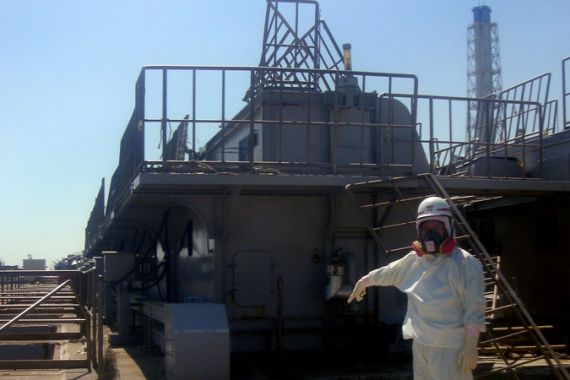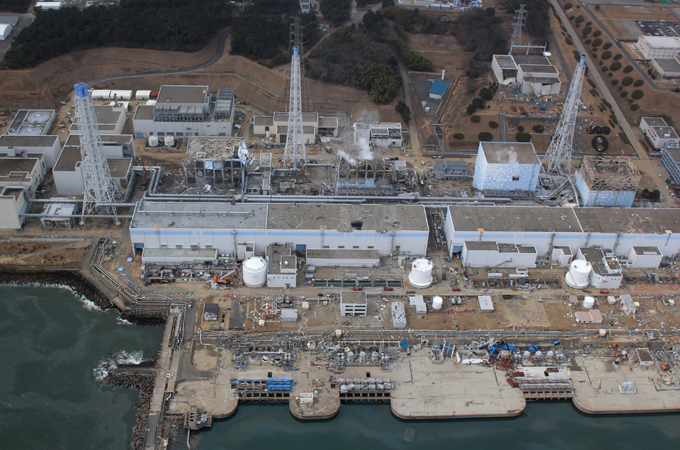Explosion still a risk at Japan nuclear plant
Workers inject nitrogen gas to reduce chances of blow-up but are running out of space to store radioactive water.

 |
| Previous hydrogen explosions at the plant blew the roofs off of some reactor buildings [EPA] |
After stopping the leak of highly radioactive water from a crippled nuclear plant north of Tokyo, Japanese authorities have begun injecting nitrogen into part of the facility in order to prevent a hydrogen explosion.
Workers at the Fukushima Daiichi nuclear plant began pumping nitrogen gas into the area surrounding the No. 1 reactor around 1:30 am (1630 GMT) on Thursday, said Makoto Watanabe, a spokesman for the Nuclear and Industrial Safety Agency.
Keep reading
list of 4 itemsAfter the Hurricane
World’s coral reefs face global bleaching crisis
Why is Germany maintaining economic ties with China?
The nitrogen injection was the latest in a series of efforts to prevent another nuclear catastrophe in Japan, which has already been hit by a 9.0-magnitude earthquake and a devastating tsunami on March 11 that left tens of thousands dead and severely damaged the Fukushima Daiichi, causing a radioactive leak that forced the government to evacuate citizens 20 kilometers away from the plant.
A March 26 internal report from the US Nuclear Regulatory Commission warned of the possibility of explosions at the plant, where superheated fuel rods that the government is desperately trying to cool are pulling hydrogen from the water and causing the gas to mix with oxygen seeping in through cracks in the plant.
The large explosions that rocked the Fukushima Daiichi in the early days of the crisis were caused by the buildup of hydrogen gas around the reactors.
Radioactive particles have settled in the area around the plant, contaminating water, vegetables, dairy products and other food. More explosions could spread the poisonous material farther.
But the nitrogen injection itself carries risk, since it could disperse radioactive vapour into the environment.
Chief Cabinet Secretary Yukio Edano told reporters on Wednesday that the government was still trying to come up with a “clear safety standard” and might expand the evacuation zone around the plant, which lies roughly 220 kilometers northeast of Tokyo.
Workers on Wednesday succeeded in halting the flow of highly radioactive water into the ocean near the plant by injecting a mixture of liquid glass and a hardening agent into the cracked storage pit beneath the reactor.
But the stoppage creates its own problem: finding more space to store 60,000 tonnes of radioactive water.
Workers will need to continue to pour seawater over the reactors to cool them, and authorities have said they will need to pump 11,500 tonnes of low-radiation water back into the sea.
The salt from the seawater that has been used to cool the plant is probably blocking circulation pathways, particularly in the No. 1 reactor, the US Nuclear Regulatory Commission report said.
As the reactors’ structures fill with more and more water, the increasing pressure on their walls makes it likelier they could break in the case of an aftershock, the report said.
The radioactive water being pumped out of the plant could spread to nearby fishing communities and lead to a government ban on sales from the areas, effectively wiping out incomes.
The Tokyo Electric Power Co. (TEPCO), which owns the plant, has begun funding local governments to pay those who have been forced to evacuate due to the radiation crisis.
The company will also face an enormous compensation bill.